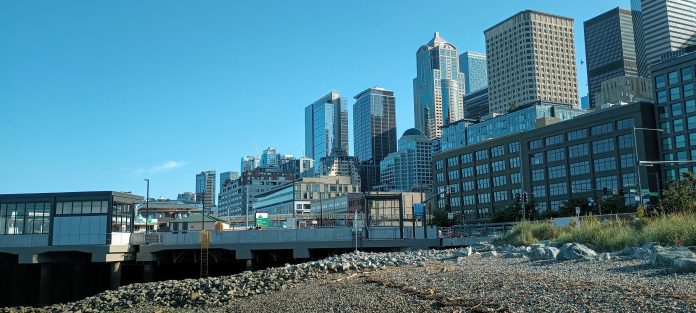
This weekend, Seattle’s Office of the Waterfront quietly opened a stretch of rocky beach in Pioneer Square, just south of Colman Dock. The small parcel of waterfront, which has been sitting behind a fence for more than two years so that the plants could fully develop in the space, is the first new direct downtown access to Elliott Bay in over a decade. Its opening to the public is one more sign that Seattle’s redevelopment of the central waterfront is nearing completion. But the new patch of public space comes just as the city announces the potential for future expansion of public space nearby.
Not intended for swimming, the habitat beach is a small attempt to restore a part of Elliott Bay’s marine ecosystem over the past decade as Seattle has been remaking the waterfront, spurred by the removal of the Alaskan Way Viaduct (an elevated highway that had long separated downtown from the waterfront) and associated projects.
“The Pioneer Square Habitat Beach is part of a suite of marine habitat improvements implemented in conjunction with the first phase of the Elliott Bay Seawall Replacement Project and was designed with a special focus on encouraging juvenile salmon migration,” the Office of the Waterfront noted in announcing the beach’s opening late last week. “When the existing waterfront was first developed, many of the native intertidal elements were lost including sloping beaches, crevices and vegetated hiding places for fish. Restoring the functions of a natural shoreline and improving ecosystem productivity is an important goal of the Waterfront Seattle program and the new Waterfront Park.”
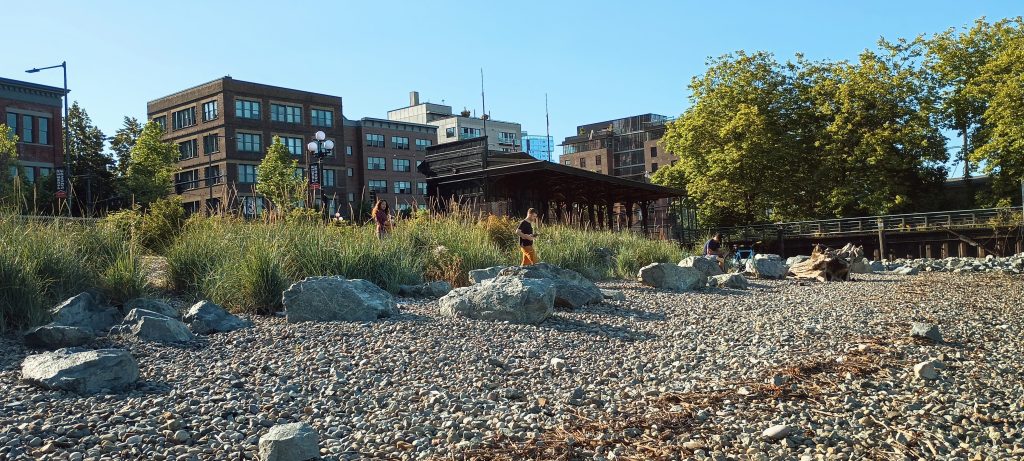
The City plans to keep the beach open through this summer, then close the beach so that the Washington State Department of Transportation (WSDOT), which owns the property, can install artwork in the space. By next spring, when it permanently reopens, the city plans to have selected a tenant for the adjacent Washington Street Landing Pergola building, which dates to 1920 and was restored in 2018. Adding a concessionaire to this stretch of the waterfront, combined with the new retail tenants that will be returning to the $467 million remodel of Colman Dock next door should provide significant activation to a stretch of the waterfront that hasn’t always had as much foot traffic as parts further north.
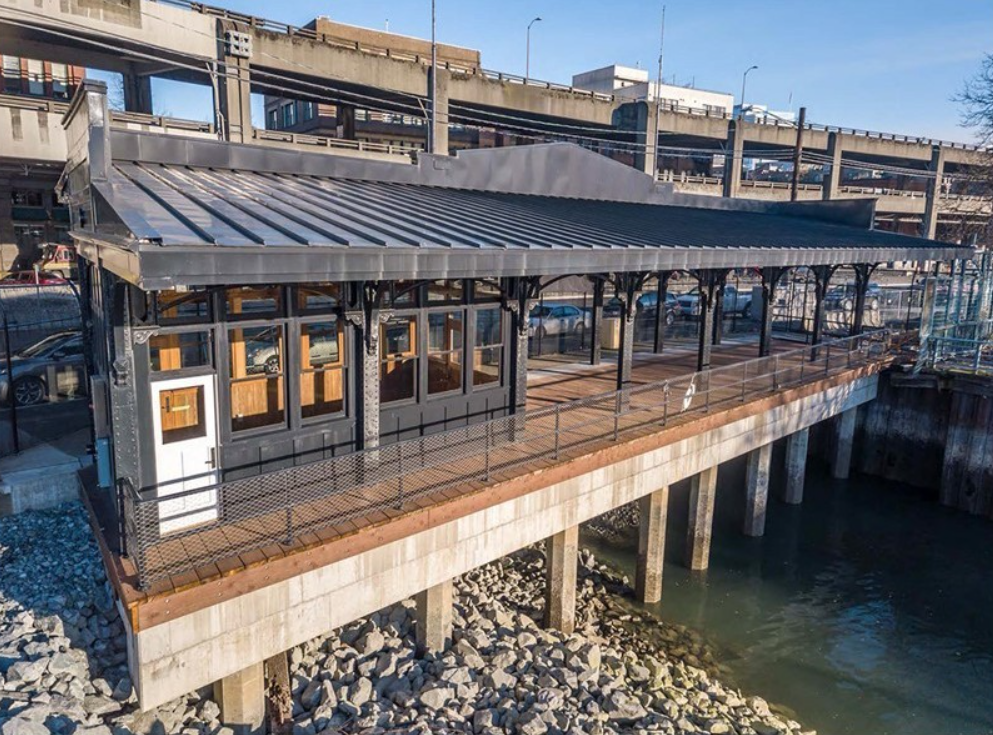
But just south of the new habitat beach, a long-underutilized property that’s outside the scope of the Office of the Waterfront’s work could provide another opportunity for additional public and open space in the vicinity of the envisioned Colman Dock multimodal hub. Buried among the laundry list of items moving forward in the latest iteration of Mayor Bruce Harrell’s Downtown Activation Plan last week was an acknowledgement that the City is still pursuing how it could take advantage of potential opportunities at Pier 48. “Explore the future use of Pier 48 as new open green space,” one bullet point noted in the Mayor’s fact sheet on the plan, under the category of “Creat[ing] a healthy, resilient, and green Downtown.”
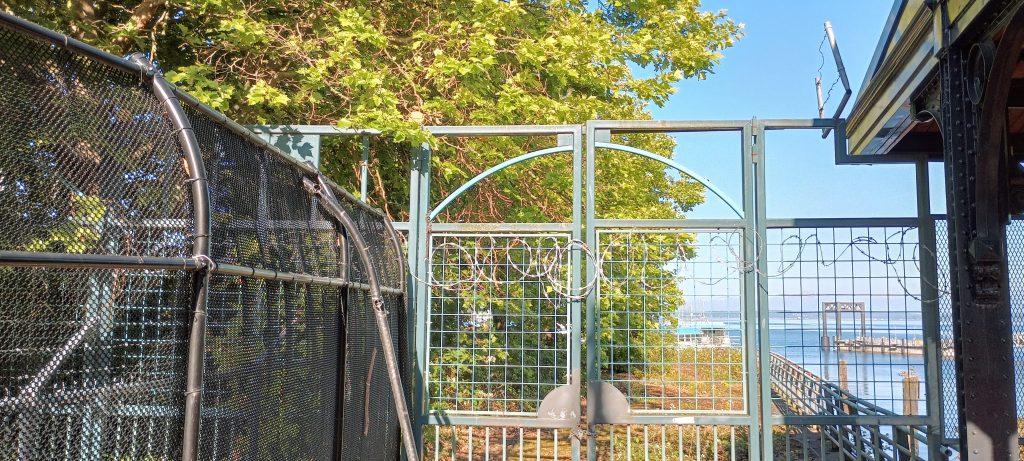
Like the beach and ferry dock, Pier 48 is WSDOT owned; its current use is overflow parking for Colman Dock, with a large portion of the site behind a locked fence overgrowing with vegetation. What could happen with the site has been a part of the conversation around the central waterfront redevelopment going back more than a decade.
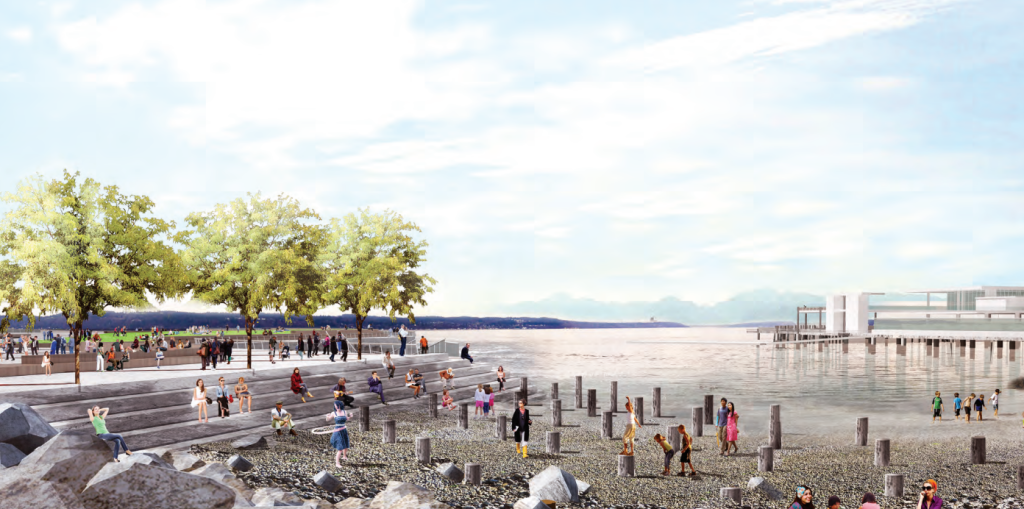
In 2015, a concept plan for the area included an ambitious vision for Pier 48, making it a south waterfront counterpart to the new aquarium under construction to the north, with a new park jutting into Elliott Bay complete with two reconfigurable stage spaces, and a large “headhouse building” containing retail storefronts. This new space was envisioned as a place for concerts (with a historical nod to when Nirvana played here in 1993) and events like fireworks viewing.
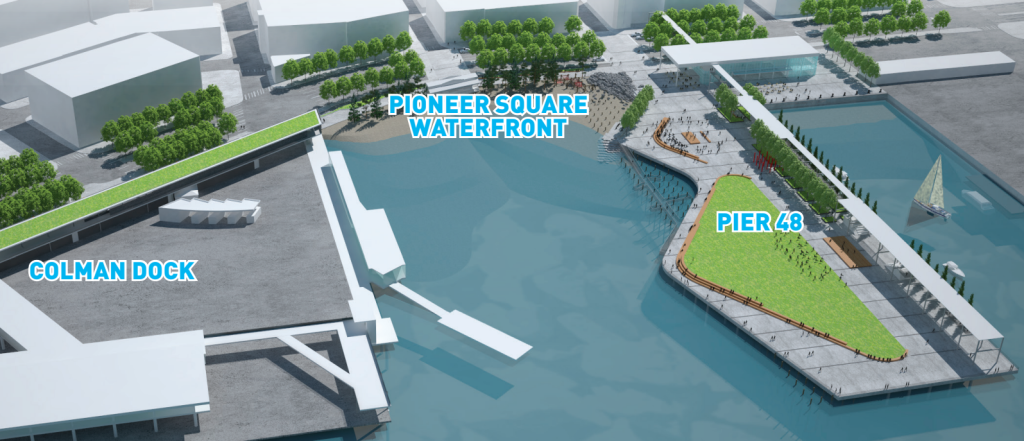
The concept included a second, larger beach space on the footprint of what’s currently Pier 48, with a small playground area and much more seating and amenities, directly connecting onto the newly revamped pier. This design, developed during the visioning process for the entire waterfront redevelopment, ultimately proved too ambitious, particularly given the fact that the City does not own Pier 48. Like the floating pool barge, it was eliminated as the City scaled back the waterfront to its most “essential” elements.
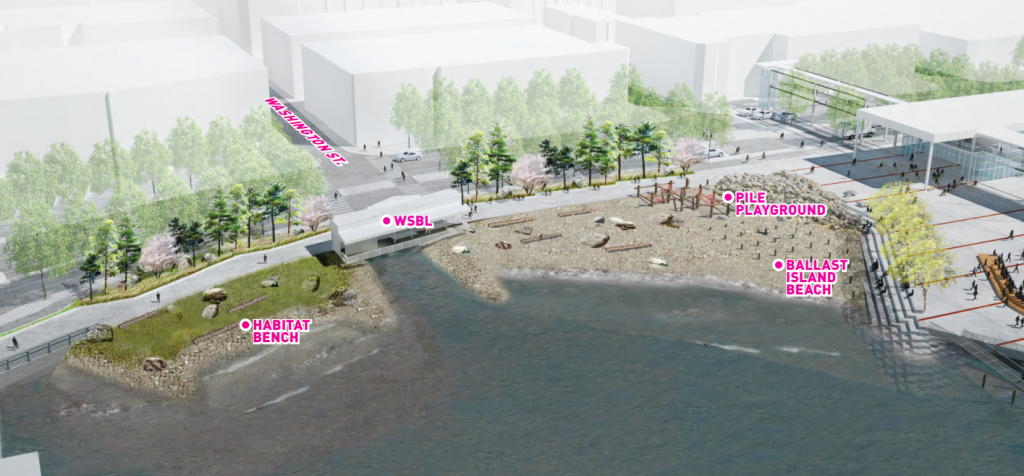
After Colman Dock construction is complete, the site won’t be needed for vehicle queue space any longer, opening the door to adaptive reuse. However, the pier is being eyed for more utilitarian purposes that a concert venue and expanded park. In March, the Kitsap Sun reported that Kitsap Transit’s board had given preliminary approval to move ahead with considering Pier 48 as a site for its own passenger ferry terminal. Currently Kitsap Transit leases space at King County’s water taxi dock next door, but likely fast ferry expansion means more space will be needed.
But revamping Pier 48 into a foot ferry terminal needn’t be framed as at odds with increasing the amount of public space. In 2021, the Office of the Waterfront, funded by a grant from the Washington Department of Commerce, finalized a new concept for Pier 48. Developed in conjunction with city organizations with ties to south downtown, the result is a much more scaled-back vision than the two-event-stage pier from 2015, but includes a larger beach space, some green space, and a building that could accommodate retail. It also includes slips for new fast ferries.
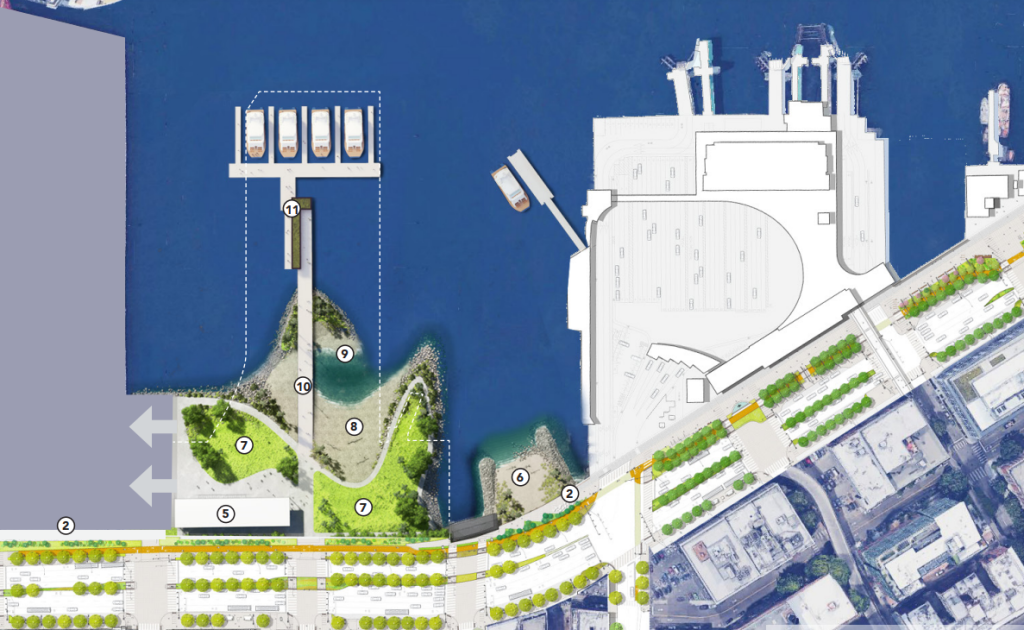
Mayor Bruce Harrell’s office did not respond to a request for more details on how the City is planning to work with WSDOT, Kitsap Transit, and other stakeholders to advance its goals for creating more open space at this end of the new waterfront. But the dream of 2015 is still alive, it seems, albeit a scaled-back dream more in keeping with the ambitions of today’s Seattle.
Ryan Packer has been writing for The Urbanist since 2015, and currently reports full-time as Contributing Editor. Their beats are transportation, land use, public space, traffic safety, and obscure community meetings. Packer has also reported for other regional outlets including BikePortland, Seattle Met, and PubliCola. They live in the Capitol Hill neighborhood of Seattle.

